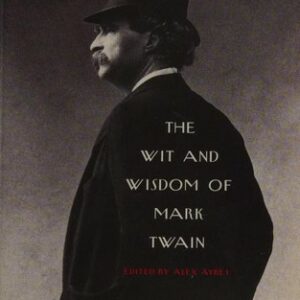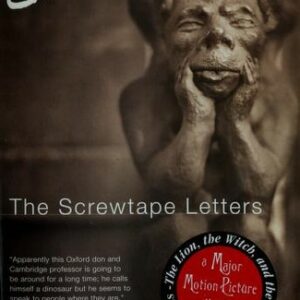God Knows His Name
$19.95
| Title | Range | Discount |
|---|---|---|
| Trade Discount | 5 + | 25% |
- Description
- Additional information
Description
Police found John Doe No. 24 in the early morning hours of October 11, 1945, in Jacksonville, Illinois. Unable to communicate, the deaf and mute teenager was labeled “feeble minded” and sentenced by a judge to the nightmarish jumble of the Lincoln State School and Colony in Jacksonville. He remained in the Illinois mental health care system for over thirty years and died at the Sharon Oaks Nursing Home in Peoria on November 28, 1993.
Deaf, mute, and later blind, the young black man survived institutionalized hell: beatings, hunger, overcrowding, and the dehumanizing treatment that characterized state institutions through the 1950s. In spite of his environment, he made friends, took on responsibilities, and developed a sense of humor. People who knew him found him remarkable.Award-winning journalist Dave Bakke reconstructs the life of John Doe No. 24 through research into a half-century of the state mental health system, personal interviews with people who knew him at various points during his life, and sixteen black-and-white illustrations. After reading a story about John Doe in the New York Times, acclaimed singer-songwriter Mary Chapin Carpenter wrote and recorded “John Doe No. 24” and purchased a headstone for his unmarked grave. She contributes a foreword to this book. As death approached for the man known only as John Doe No. 24, his one-time nurse Donna Romine reflected sadly on his mystery. “Ah, well,” she said, “God knows his name.”
Deaf, mute, and later blind, the young black man survived institutionalized hell: beatings, hunger, overcrowding, and the dehumanizing treatment that characterized state institutions through the 1950s. In spite of his environment, he made friends, took on responsibilities, and developed a sense of humor. People who knew him found him remarkable.Award-winning journalist Dave Bakke reconstructs the life of John Doe No. 24 through research into a half-century of the state mental health system, personal interviews with people who knew him at various points during his life, and sixteen black-and-white illustrations. After reading a story about John Doe in the New York Times, acclaimed singer-songwriter Mary Chapin Carpenter wrote and recorded “John Doe No. 24” and purchased a headstone for his unmarked grave. She contributes a foreword to this book. As death approached for the man known only as John Doe No. 24, his one-time nurse Donna Romine reflected sadly on his mystery. “Ah, well,” she said, “God knows his name.”
Police found John Doe No. 24 in the early morning hours of October 11, 1945, in Jacksonville, Illinois. Unable to communicate, the deaf and mute teenager was labeled “feeble minded” and sentenced by a judge to the nightmarish jumble of the Lincoln State School and Colony in Jacksonville. He remained in the Illinois mental health care system for over thirty years and died at the Sharon Oaks Nursing Home in Peoria on November 28, 1993. Award-winning journalist Dave Bakke reconstructs the life of John Doe No. 24 through research into a half-century of the state mental health system, personal interviews with people who knew him at various points during his life, and sixteen black-and-white illustrations.
Dave Bakke is senior writer at the State Journal-Register in Springfield, Illinois. With Dale Hamm, he is the author of The Last of the Market Hunters.
This is not “Cheers” The barroom setting of the hit TV show “Cheers” exuded friendship and conviviality because it was a place where, according to the show’s title song, “everyone knows your name.” In 1994, Mary Chapin Carpenter wrote a song about an entirely different situation, recounting the life of a man whose name was unknown to all. The song moved newspaper reporter Dave Bakke to investigate the story behind this nameless individual. In this short book, Bakke writes movingly of places where for almost fifty years, no one knew the real identity of a man known finally as John Doe No. 24. In writing about John’s life, Bakke not only tells a story of personal tragedy and triumph but also reveals much about mental health policy in the United States in the second half of the twentieth century. Committed to Illinois’ Lincoln State School and Colony for the Feeble-Minded in October 1945, John died in a Peoria nursing home in November 1993. His journey through the Byzantine nature of state hospitals and group homes of developmental centers and congregate living facilities, often reads like fiction and provides a cautionary tale of how America treated (and still treats) its most vulnerable citizens.A young black male entered the Illinois mental health system in October 1945. Jacksonville, Illinois police officers found him in the early morning hours rummaging through a back alley. Upon picking him up for questioning, they discovered the man had no identification and could not answer their inquiries, instead grunting and pointing to his ears, indicating he was deaf. In the first of a series of labeling decisions that would mark the rest of John’s life, police categorized him as not only deaf but also mentally retarded. John was then adjudicated as feeble-minded through the Morgan County Court and committed to the Lincoln State School and Colony, seventy miles from Jacksonville. Within three weeks of being picked up in Jacksonville, the unnamed youngster (judged to be about sixteen years old) had a new life at Lincoln and a new name, John Doe #2. Bakke is especially good at revealing the underlying assumptions involved in the process of labeling John as “feeble-minded,” assumptions that tell us much about mid-twentieth century America’s beliefs, prejudices, and acceptance of differences.Bakke traces John’s life through the thirty years he lived at Lincoln. His stay there corresponded with the nadir of American institutional control. Severe overcrowding, untrained and underpaid staff, few educational and training programs for patients (still identified as “inmates”), and over medication with newly discovered psychotropic drugs marked most institutional facilities into the 1960s. These revelations are not new, they form the basis of interpretation of this time period in the works of authors as diverse as Andrew Scull and Gerald Grob.[1] What Bakke does, and does well, is personalize these problems through the story of John’s life at Lincoln. Rarely lapsing into either sensationalism or sentimentality (which are easy to do in John’s case) Bakke weaves a tale of daily boredom and struggle as John searches for ways to fit into the only world he knows–the routinized structure of the institutional ward. Bakke makes this drab existence come alive and John’s life at Lincoln seems remarkably similar to that of Randall McMurtry, Ken Kesey’s existential hero of One Flew Over the Cuckoo’s Nest. The Lincoln dance band, led by a staff member and comprised of “high-level” patients, provided John, and other inmates, with an opportunity to escape from this harsh life. Almost every week, the band provided entertainment for the other patients, and John, though deaf, participated as well. “John sat in one of the folding chairs, eyes full of wonder at the scene before him … A vibration in the air made John’s stomach feel light. What is music to a deaf man? On this night, it was everything” (p. 28). By the 1960s, under the scrutiny of parents organizations, advocacy groups, and investigative newspaper reporting, institutions slowly made improvements. They outlawed their most egregious abuses, including the long-standing practices of using patient labor to perform daily tasks at their facilities and the daily uses of powerful psychotropic drugs to control a volatile group of patients. John was a victim of both of these routines during his stay at Lincoln. Simultaneously, backed by the Kennedy administration’s support, federal dollars flowed for the establishment of community mental health facilities. Institutions where overcrowding had led to warehouse-like conditions saw their populations drop precipitously. John Doe was a part of this trend. By September 1975, John was ironically transferred back to Jacksonville, where he had originally encountered the state’s mental health bureaucracy. Now virtually blind and ravaged by diabetes, both side effects of years of psychotropic medications, John was transferred to the Jacksonville Developmental Center. While at Jacksonville, he was given a new name–John Doe #24, but also a real name, John Doe Boyd, so he could apply for and receive Supplementary Security Benefits (SSI). Though still an institutional setting, Jacksonville provided John with skill development and, more importantly, hope. Living in a setting that more approximated life in the community and working with a staff person who recognized his abilities, John blossomed into a functioning adult for the first time, using sign language to communicate his needs and wants. By 1981, John had progressed far enough that he was sent to the Helen Keller National Center on Long Island. This federally-funded program provided training for deaf-blind youths and adults. John stayed there for two years, a longer than average stay at the facility, learning how to communicate and take care of himself. Upon completion of his training at Helen Keller, John was deemed ready to return to society. In 1983, John was flown back to Illinois and moved to a group home in a neighborhood setting in Springfield. John lived in two different group homes in Springfield in the mid-1980s. He lived as normal a life as could be expected for a middle-aged man, deaf and blind with diabetes, socialized to the norms of a gigantic institution for the feeble-minded. He went to work on the city bus, working at a sheltered workshop facility. He performed chores around the house and participated in Special Olympics. Deteriorating physical conditions forced John to move out of his group homes and into a congregate living center in Peoria. As his health continued to decline, even this facility could not handle his specialized health needs. He was transferred once again, this time to a Peoria nursing home, where he stayed only a month before dying on November 28, 1993. Bakke ends the book on an evocative note–“The man who spent his life an obscure, unknown person was buried in an unmarked grave” (p. 142). Bakke’s book is not the traditional academic monograph. It is quite short, with no notes of any kind and no index. Furthermore, due to the paucity of source material, Bakke often has to resort to inference or even invented dialog to relate his tale. In a way reminiscent of John Demos’s The Unredeemed Captive, Bakke combines fiction and non-fiction to tell John’s story.[2] For example, on pages four and five, Bakke recounts the admission of John into the Lincoln State School, complete with verbatim dialog between the Jacksonville police officer bringing John to the facility and the admissions clerk recording the information. Bakke gives no trace of where he has gotten this exchange. Yet this scene, and others like it, work well because Bakke weaves his story so eloquently. Using these techniques, Bakke gives us great insight into the life of a man trapped in an institution for the feeble-minded. He also allows us to see the daily struggles and routines of individuals whose lives exist within institutional walls and at the whims of ward staff. Bakke’s personalized story of John Doe will work well in a classroom setting and students will probably not complain about the lack of documentation. When the book is used in a broader context, Bakke’s lack of notes becomes more problematical. It is frustrating that Bakke gives us no clues at all how the fascinating information concerning the life of John Doe was obtained.Used in conjunction with more scholarly works, such as James Trent’s Inventing the Feeble Mind and Philip Ferguson’s Abandoned to Their Fate, God Only Knows His Name puts a human face on the sweeping changes occurring in the field of mental retardation in the second half of the twentieth century.[3] There is little mention here of the legal and political struggles to improve the lives of those individuals relegated to the back wards of institutional warehouses. Bakke does not dwell on the questions surrounding institutional reform and community placement. There is no critical evaluation of the the movement to deinstitutionalize facilities designed to house those labeled as retarded. By focusing on John’s life history, however, Dave Bakke shows how a victim of an oppressive institutional system can live a life of dignity and meaning. During his life, no one knew John’s name yet thanks to Bakke’s fine book, many will know John’s story.
“It never crossed my mind that someday I might write a foreword to a book about John Doe No. 24’s life when I finished the song. Clearly, he inspired more than a few people during his life, and after it was over.”—Mary Chapin Carpenter, from the Foreword
“It never crossed my mind that someday I might write a foreword to a book about John Doe No. 24’s life when I finished the song. Clearly, he inspired more than a few people during his life, and after it was over.”—Mary Chapin Carpenter, from the Foreword
“God Knows His Name: The True Story of John Doe No. 24 allows the reader to feel how institutional life was experienced by an individual who spent the better part of his life (from adolescence on) in the Illinois state institutional system. In many ways the book provides a balanced view of institutional caregivers; some are compassionate and others less so. The real indictment in the book is of the governmental system itself and the neglect of the thousands of institutionalized persons by the legislature and the public.”—Thomas Walz, author of The Unlikely Celebrity: Bill Sackter's Triumph over Disability
“God Knows His Name: The True Story of John Doe No. 24 allows the reader to feel how institutional life was experienced by an individual who spent the better part of his life (from adolescence on) in the Illinois state institutional system. In many ways the book provides a balanced view of institutional caregivers; some are compassionate and others less so. The real indictment in the book is of the governmental system itself and the neglect of the thousands of institutionalized persons by the legislature and the public.”—Thomas Walz, author of The Unlikely Celebrity: Bill Sackter's Triumph over Disability
“God Knows His Name: The True Story of John Doe No. 24 allows the reader to feel how institutional life was experienced by an individual who spent the better part of his life (from adolescence on) in the Illinois state institutional system. In many ways the book provides a balanced view of institutional caregivers; some are compassionate and others less so. The real indictment in the book is of the governmental system itself and the neglect of the thousands of institutionalized persons by the legislature and the public.”—Thomas Walz, author of The Unlikely Celebrity: Bill Sackter’s Triumph over Disability
This is not “Cheers” The barroom setting of the hit TV show “Cheers” exuded friendship and conviviality because it was a place where, according to the show’s title song, “everyone knows your name.” In 1994, Mary Chapin Carpenter wrote a song about an entirely different situation, recounting the life of a man whose name was unknown to all. The song moved newspaper reporter Dave Bakke to investigate the story behind this nameless individual. In this short book, Bakke writes movingly of places where for almost fifty years, no one knew the real identity of a man known finally as John Doe No. 24. In writing about John’s life, Bakke not only tells a story of personal tragedy and triumph but also reveals much about mental health policy in the United States in the second half of the twentieth century. Committed to Illinois’ Lincoln State School and Colony for the Feeble-Minded in October 1945, John died in a Peoria nursing home in November 1993. His journey through the Byzantine nature of state hospitals and group homes of developmental centers and congregate living facilities, often reads like fiction and provides a cautionary tale of how America treated (and still treats) its most vulnerable citizens.A young black male entered the Illinois mental health system in October 1945. Jacksonville, Illinois police officers found him in the early morning hours rummaging through a back alley. Upon picking him up for questioning, they discovered the man had no identification and could not answer their inquiries, instead grunting and pointing to his ears, indicating he was deaf. In the first of a series of labeling decisions that would mark the rest of John’s life, police categorized him as not only deaf but also mentally retarded. John was then adjudicated as feeble-minded through the Morgan County Court and committed to the Lincoln State School and Colony, seventy miles from Jacksonville. Within three weeks of being picked up in Jacksonville, the unnamed youngster (judged to be about sixteen years old) had a new life at Lincoln and a new name, John Doe #2. Bakke is especially good at revealing the underlying assumptions involved in the process of labeling John as “feeble-minded,” assumptions that tell us much about mid-twentieth century America’s beliefs, prejudices, and acceptance of differences.Bakke traces John’s life through the thirty years he lived at Lincoln. His stay there corresponded with the nadir of American institutional control. Severe overcrowding, untrained and underpaid staff, few educational and training programs for patients (still identified as “inmates”), and over medication with newly discovered psychotropic drugs marked most institutional facilities into the 1960s. These revelations are not new, they form the basis of interpretation of this time period in the works of authors as diverse as Andrew Scull and Gerald Grob.[1] What Bakke does, and does well, is personalize these problems through the story of John’s life at Lincoln. Rarely lapsing into either sensationalism or sentimentality (which are easy to do in John’s case) Bakke weaves a tale of daily boredom and struggle as John searches for ways to fit into the only world he knows–the routinized structure of the institutional ward. Bakke makes this drab existence come alive and John’s life at Lincoln seems remarkably similar to that of Randall McMurtry, Ken Kesey’s existential hero of One Flew Over the Cuckoo’s Nest. The Lincoln dance band, led by a staff member and comprised of “high-level” patients, provided John, and other inmates, with an opportunity to escape from this harsh life. Almost every week, the band provided entertainment for the other patients, and John, though deaf, participated as well. “John sat in one of the folding chairs, eyes full of wonder at the scene before him … A vibration in the air made John’s stomach feel light. What is music to a deaf man? On this night, it was everything” (p. 28). By the 1960s, under the scrutiny of parents organizations, advocacy groups, and investigative newspaper reporting, institutions slowly made improvements. They outlawed their most egregious abuses, including the long-standing practices of using patient labor to perform daily tasks at their facilities and the daily uses of powerful psychotropic drugs to control a volatile group of patients. John was a victim of both of these routines during his stay at Lincoln. Simultaneously, backed by the Kennedy administration’s support, federal dollars flowed for the establishment of community mental health facilities. Institutions where overcrowding had led to warehouse-like conditions saw their populations drop precipitously. John Doe was a part of this trend. By September 1975, John was ironically transferred back to Jacksonville, where he had originally encountered the state’s mental health bureaucracy. Now virtually blind and ravaged by diabetes, both side effects of years of psychotropic medications, John was transferred to the Jacksonville Developmental Center. While at Jacksonville, he was given a new name–John Doe #24, but also a real name, John Doe Boyd, so he could apply for and receive Supplementary Security Benefits (SSI). Though still an institutional setting, Jacksonville provided John with skill development and, more importantly, hope. Living in a setting that more approximated life in the community and working with a staff person who recognized his abilities, John blossomed into a functioning adult for the first time, using sign language to communicate his needs and wants. By 1981, John had progressed far enough that he was sent to the Helen Keller National Center on Long Island. This federally-funded program provided training for deaf-blind youths and adults. John stayed there for two years, a longer than average stay at the facility, learning how to communicate and take care of himself. Upon completion of his training at Helen Keller, John was deemed ready to return to society. In 1983, John was flown back to Illinois and moved to a group home in a neighborhood setting in Springfield. John lived in two different group homes in Springfield in the mid-1980s. He lived as normal a life as could be expected for a middle-aged man, deaf and blind with diabetes, socialized to the norms of a gigantic institution for the feeble-minded. He went to work on the city bus, working at a sheltered workshop facility. He performed chores around the house and participated in Special Olympics. Deteriorating physical conditions forced John to move out of his group homes and into a congregate living center in Peoria. As his health continued to decline, even this facility could not handle his specialized health needs. He was transferred once again, this time to a Peoria nursing home, where he stayed only a month before dying on November 28, 1993. Bakke ends the book on an evocative note–“The man who spent his life an obscure, unknown person was buried in an unmarked grave” (p. 142). Bakke’s book is not the traditional academic monograph. It is quite short, with no notes of any kind and no index. Furthermore, due to the paucity of source material, Bakke often has to resort to inference or even invented dialog to relate his tale. In a way reminiscent of John Demos’s The Unredeemed Captive, Bakke combines fiction and non-fiction to tell John’s story.[2] For example, on pages four and five, Bakke recounts the admission of John into the Lincoln State School, complete with verbatim dialog between the Jacksonville police officer bringing John to the facility and the admissions clerk recording the information. Bakke gives no trace of where he has gotten this exchange. Yet this scene, and others like it, work well because Bakke weaves his story so eloquently. Using these techniques, Bakke gives us great insight into the life of a man trapped in an institution for the feeble-minded. He also allows us to see the daily struggles and routines of individuals whose lives exist within institutional walls and at the whims of ward staff. Bakke’s personalized story of John Doe will work well in a classroom setting and students will probably not complain about the lack of documentation. When the book is used in a broader context, Bakke’s lack of notes becomes more problematical. It is frustrating that Bakke gives us no clues at all how the fascinating information concerning the life of John Doe was obtained.Used in conjunction with more scholarly works, such as James Trent’s Inventing the Feeble Mind and Philip Ferguson’s Abandoned to Their Fate, God Only Knows His Name puts a human face on the sweeping changes occurring in the field of mental retardation in the second half of the twentieth century.[3] There is little mention here of the legal and political struggles to improve the lives of those individuals relegated to the back wards of institutional warehouses. Bakke does not dwell on the questions surrounding institutional reform and community placement. There is no critical evaluation of the the movement to deinstitutionalize facilities designed to house those labeled as retarded. By focusing on John’s life history, however, Dave Bakke shows how a victim of an oppressive institutional system can live a life of dignity and meaning. During his life, no one knew John’s name yet thanks to Bakke’s fine book, many will know John’s story.
Additional information
| Dimensions | 1 × 6 × 9 in |
|---|












